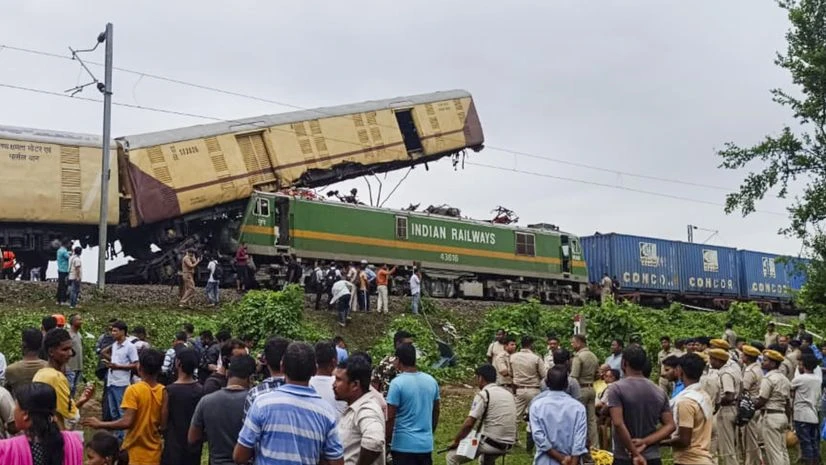There has been an average of 44 consequential train accidents every year in the five-year period ending 2022-23 (FY23).
A consequential train accident, according to the Indian Railways, includes those with serious repercussions, including injuries, loss of life, rail traffic disruption and damage to railway property.
The number of such accidents has been in decline in recent years though collisions have come in at the rate of one in every 3-4 months.
Over 470 such rail accidents, or about 39 per month, were reported in 2000-01. More than two decades on, consequential train accidents were down nearly 90 per cent.
The decline has been steady and fell further during the pandemic when despite the reduction in passenger trains there were 22 rail accidents in 2020-21 and 35 accidents in 2021-22.
As many as 48 rail accidents were reported in 2022-23 and 13 in 2023-24 (data as of July 2023) (chart 1).
)
)
More From This Section
Even as rail derailments remain the major reason for most of these accidents, the share of rail collisions increased in 2022-23 compared to the previous years.
Of the 59 accidents in 2018-19, derailments accounted for 46 instances of accidents.
Fire in trains made up for 6 instances and there were 3 instances each for manned and unmanned level crossing accidents. No rail accidents were caused due to collisions that year.
In 2022-23, while collisions were the reason for 6 of the 48 rail accidents, derailments caused 36 accidents. There have been 4 instances of rail collisions as of July for 2023-24, shows data from a Parliament reply last year.
In other words, there have been 18 collisions resulting in a consequential train accident in the last 64 months for which data is available. This works out to one collision every 3.6 months (chart 2).
) In a tragic accident early Monday morning, a goods train collided with the Sealdah-bound Kanchanjunga Express at New Jalpaiguri station in West Bengal. It resulted in the death of 15 people and injured 54 others (latest figures at the time of writing).
In a tragic accident early Monday morning, a goods train collided with the Sealdah-bound Kanchanjunga Express at New Jalpaiguri station in West Bengal. It resulted in the death of 15 people and injured 54 others (latest figures at the time of writing).
) In a tragic accident early Monday morning, a goods train collided with the Sealdah-bound Kanchanjunga Express at New Jalpaiguri station in West Bengal. It resulted in the death of 15 people and injured 54 others (latest figures at the time of writing).
In a tragic accident early Monday morning, a goods train collided with the Sealdah-bound Kanchanjunga Express at New Jalpaiguri station in West Bengal. It resulted in the death of 15 people and injured 54 others (latest figures at the time of writing).
Modernisation of rail signaling systems and upgradation of rail safety measures have gained considerable public attention especially since the Balasore rail accident. Here, three trains collided in Odisha in June 2023.
The accident, which some say is one of India’s deadliest rail collisions, claimed about 300 and injured more than a 1,000 people.
The share of accidents has been the highest for the central region in 2022-23, according to data from a reply in the Lok Sabha. It showed 8 casualties and 81 injuries across the country.
As many as eight, or 17 per cent of the 48 rail accidents in 2022-23 took place in the central region. This includes the divisions of Mumbai, Nagpur, Bhusawal, Pune and Sholapur.
The central zone is followed by the East Central zone and the northern zone with 6 accidents each.
Of the 18 railway zones in the country, no accidents occurred in six of the zones. This includes the Northeastern, South Western zone, Southern, West Central, Konkan and Metro Railways (chart 3).
)

)
